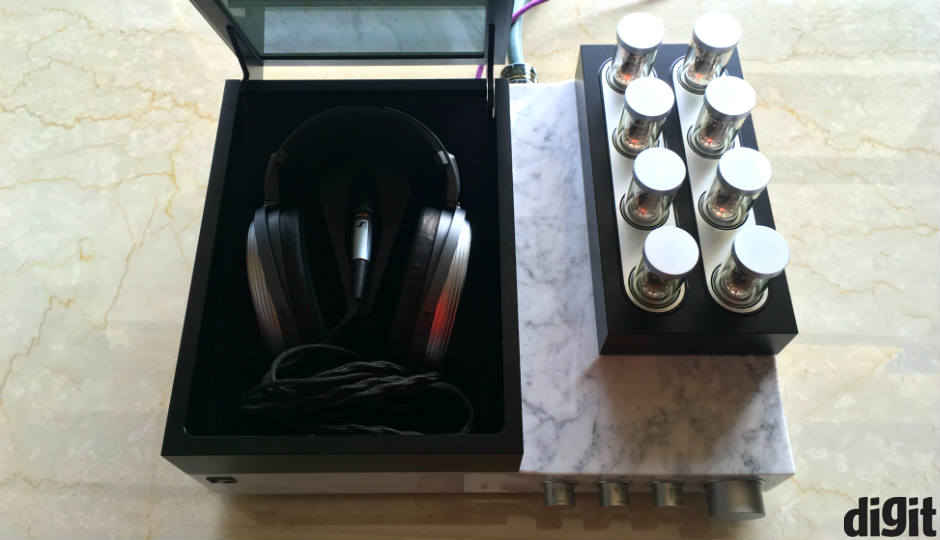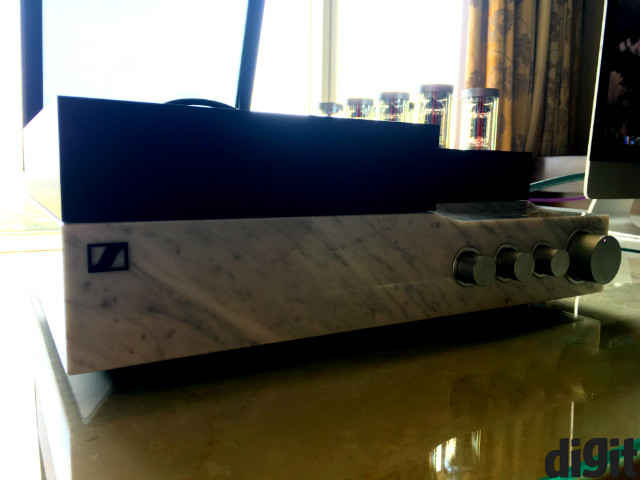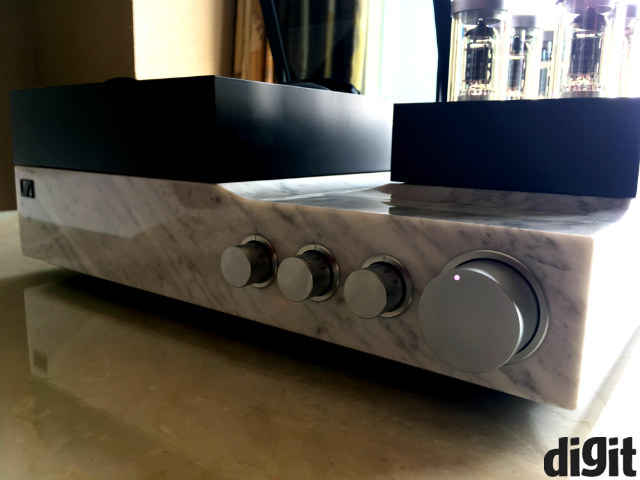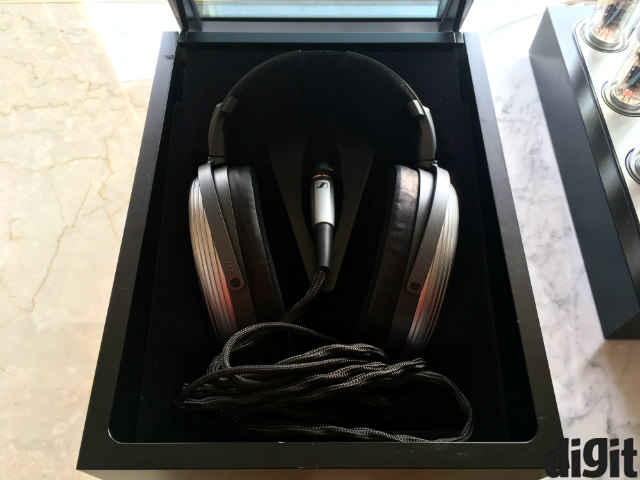The Sennheiser HE1 is where audio engineering meets the emotions of music
The world's most expensive pair of headphones is an experience unlike any that you have ever heard.

It was a sultry Mumbai afternoon when I walked into Sennheiser’s experience room. The Sennheiser HE1 was being unveiled in India, and with a price tag of Rs. 45,00,000, beckoned anyone with a keen ear to figure out how, or what exactly made these headphones as pricey as they are. What followed over the next 30 minutes is an overwhelming experience of spatial audio distribution and incredible fidelity, the likes of which I had never heard before, and neither could I have prepared myself for it.
 Survey
SurveyBefore proceeding further, it needs to be kept in mind that the Sennheiser HE1, successor to the now-legendary Orpheus, is not even remotely close to being an off-the-shelf product. Nothing can really justify the price tag it comes with, and as with most luxury products, the Sennheiser HE1 defies to bring a price-to-performance equation into question. Sennheiser will sell the HE1 as a pair of on-request pair of headphones, and anyone interested in buying these will get a personal demonstration of its capabilities.
The retail strategy seems fair, as we cannot really see people queuing up to buy the HE1, and neither does Sennheiser place the HE1 as a sales figure-oriented product. It is an exhibition in pursuit of how much high fidelity audio can be pushed to the limits, and that is exactly what the company claims to have done. As Dr. Andreas Sennheiser, CEO, puts it, “The idea was to hit the engineering boundaries, and the real areas left for making even better audio products is to improve the quality of audio production and audio mixing. That is where the effort needs to be at.”
The engineering behind Sennheiser HE1
The three key elements behind the engineering of the Sennheiser HE1 are superior analogue audio signal processing, minimising loss of data in transmission of signal and negating distortion in the final output. Here’s explaining every element of the Sennheiser HE1 individually, and how each works in tandem to produce the eventual output.
Superior signal processing: Using a tube amplifier
Anyone to have ever played a Fender Classic Stratocaster on a tube amplifier would know the fidelity of the audio signal output and the signature warmth in the guitar tone. These amplifiers have always had sealed enclosures protecting the heated coils inside to maintain the fidelity, and suitable material to minimise component noise and internal reverberations of component noise waves. It is, hence, unsurprising that Sennheiser used a tube amplifier in combination with premium marble (with high damping potential) to process the audio signal on the HE1.
The eight vacuum tubes process the incoming audio signal fast, and the freely suspended amp housing placed in the marble casing negates any incidental reverbs to prevent interruptions in the signal (free suspension removes barriers of reverberations). The Carrara marble and quartz-glass bulbs are high quality materials that preserve fidelity and process the audio signal fast and without any losses. It may or may not have been imperative to use the exact same materials to obtain similar results, but then, the Sennheiser HE1 is a no-holds-barred product, where each of these find their right place.
Minimising loss of data in transmission: Relocating the amplifier stage
In the second bit of engineering to minimise loss of data in signal transmission, Sennheiser has placed the amp stage inside the casing. The alternating voltage travels from the amplifier signal to the cup through insulated, silver-coated, oxygen-free copper cables which Sennheiser states offer the optimum conductivity of signal. Amplifying the signal inside the casing at the electrode ensure that no part of the amplified signal is lost in the transmitted signal over the cable. This also shortens the distance between the amp and the headphone’s diaphragm, thereby requiring less power to transmit the amplified signal.
Reducing total harmonic distortion: Platinum-coated diaphragm, 0.01% THD
The diaphragm is further coated with an ultra-thin vapourised layer of Platinum, a rare metal with excellent conductive properties and reducing distortion. The output frequency range is rated between 8 Hz and 100,000 Hz, ranging from the infrasonic range to well into the supersonic range. While this further takes care of the driver’s ability to produce the entire sonic range, it also ensures that harmonic distortions are kept low. The sound pressure level is 100dB at 1,000 Hz, at which point the total harmonic distortion is 0.01 percent, lower than high fidelity headphones by a large margin.
The experience
With balanced inputs and eight ESS SABRE ES9018 DACs, the engineering ensures precision knobs that respond to remote inputs. Four DACs are arranged in parallel circuit in each stereo channel to produce noise cancellation the moment you play a track. The expansive three-dimensional soundstaging is what strikes you first – not for once do your ears feel like they are in a closed circuit. Instead, you feel ample distance around your auditory range, augmented by the audio drivers enclosed inside.
“Some of the greatest experiences I have seen people have with the Sennheiser HE1 is people getting goosebumps and having tears in their eyes while listening. Katie Melua had tears listening to her own songs on the HE1, and many artists actually found flaws in their own recording,” says Dr. Sennheiser. It is not surprising, because this is sound quality like you have definitely never heard before. From the spatial distribution to the fidelity of the sound, the Sennheiser HE1 evokes extreme emotions – think of listening to Hotel California at the iconic Hell Freezes Over venue, where you actually listen to The Eagles reuniting to perform their classic from years ago.
The Sennheiser HE1 actually produces the original tone of music, the nature of which you seldom hear. It is a momentous experience, one that you will not forget in a hurry. But, that’s what good audio always is – it invokes emotions, and leaves you with an experience that you’ll not forget in a hurry.



